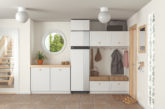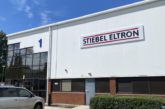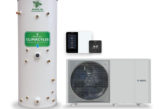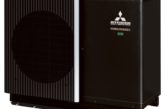
Paul Spence, Technical Manager for heatly, gives his top tips for heat pump installation success.
With the Heat Pump Association recently reporting that there’s been a 166% increase in the number of heat pump installers, it stands to reason that many installers have made the move. As we all know, heat pumps are a different beast to gas boilers, and to make it in this marketplace there’s a few essentials that will help you ensure your installs are efficient and effective.
Encourage a fabric first approach
Despite recent changes to the Boiler Upgrade Scheme which mean in the future recipients no longer have to install cavity wall insulation (if possible), I would strongly recommend you encourage your customers to do as much to improve the energy efficiency of their property before the heat pump is installed.
The savings of an investment in insulation and draught proofing will soon outweigh the initial outlay. Using a 4-bed, 200 m2 house as an example, the heatly app demonstrated that the addition of basic loft and floor insulation reduced heat loss by 45%, saving £1,000 a year in fuel costs.
A well-insulated home can also benefit from a smaller heat pump and may be less likely to require pipe and radiator upgrades, saving on the initial installation costs.
Beware of promised home improvements
If energy efficiency upgrade works are promised but not completed by the homeowner, then be aware of how that can affect your heat loss calculations. I would suggest delaying your assessment until works are complete if you can.
There are two potential negative outcomes here, which could lead to headaches in the future:
1. You base your calculations on what the homeowner says they’re going to do. The proposed works aren’t completed, the heat pump is under-specified and the customer is cold and dissatisfied.
2. You base your calculations on the house as it stands. The homeowner completes significant energy efficiency improvements, the heat pump you’ve installed is then potentially oversized, the result of which is the minimum output exceeding demand much earlier in the shoulder months, compromising its usable life. Oversized heat pumps can also increase running costs for customers due to increased cycling rates, which also leads to reduced heat output.
Make sure the controls are set correctly
It’s really important that once installed, the heat pump is set-up correctly. Common problems include the stated flow temperature not being achieved via the controller settings. Weather compensation controls are often incorrectly adjusted; if a house is too cold, for example, this could mean the upper curve parameters need to be increased by a couple of degrees at your design outdoor temperature – this will make the radiators warmer.
Crucially, make sure the end user doesn’t fiddle with the set-up. If there is a problem, they should come back to you.
Explain how to use a heat pump properly
Apart from not adjusting the controls, customers need to understand the best way to run a heat pump: not switching them on and off, keeping the temperature consistent and allowing the house to heat evenly – radiators should all be open to ensure this can happen. It can be tempting to turn off a radiator in one room, but this can cause the adjacent room to lose heat faster and not achieve temperature targets.
Use the right tools and support
System design is the most important part of a heat pump installers role and should not be underestimated. Room by room heat loss calculations can be complex and open to human error so using the latest digital design tools will definitely help with accuracy and speed. In the not too distant future, tape measures and putting pen to paper will be a thing of the past. An installer’s smart phone is fast becoming their most useful tool.
When sizing radiators, I recommend a 45/40 flow and return – by using a lower flow and return than the heat pump could generate I’m building in a degree of scope and increasing the potential efficiency. In most instances, the flow temperature can be increased if required, but if designed to the max, this control is removed. Be aware that increased flow temperature may reduce the overall kW output available.
If in doubt, refer back to the manufacturers – they want their products to work so it’s in their interest to help you. For Underfloor Heating (UFH), for example, I send the house plans to the UFH manufacturers’ in-house design service, stating that my max flow temp is 45°, not their preferred 55°. I always get that in writing – it is essential.
I also stipulate not to design in 200 or 150mm pipe centres, small load requirements may necessitate 150-200mm centres but generally the closer the loop centres, the lower the flow temperature could be, leading to greater efficiency. The floor surface and floor structure play a significant part in UFH design.












